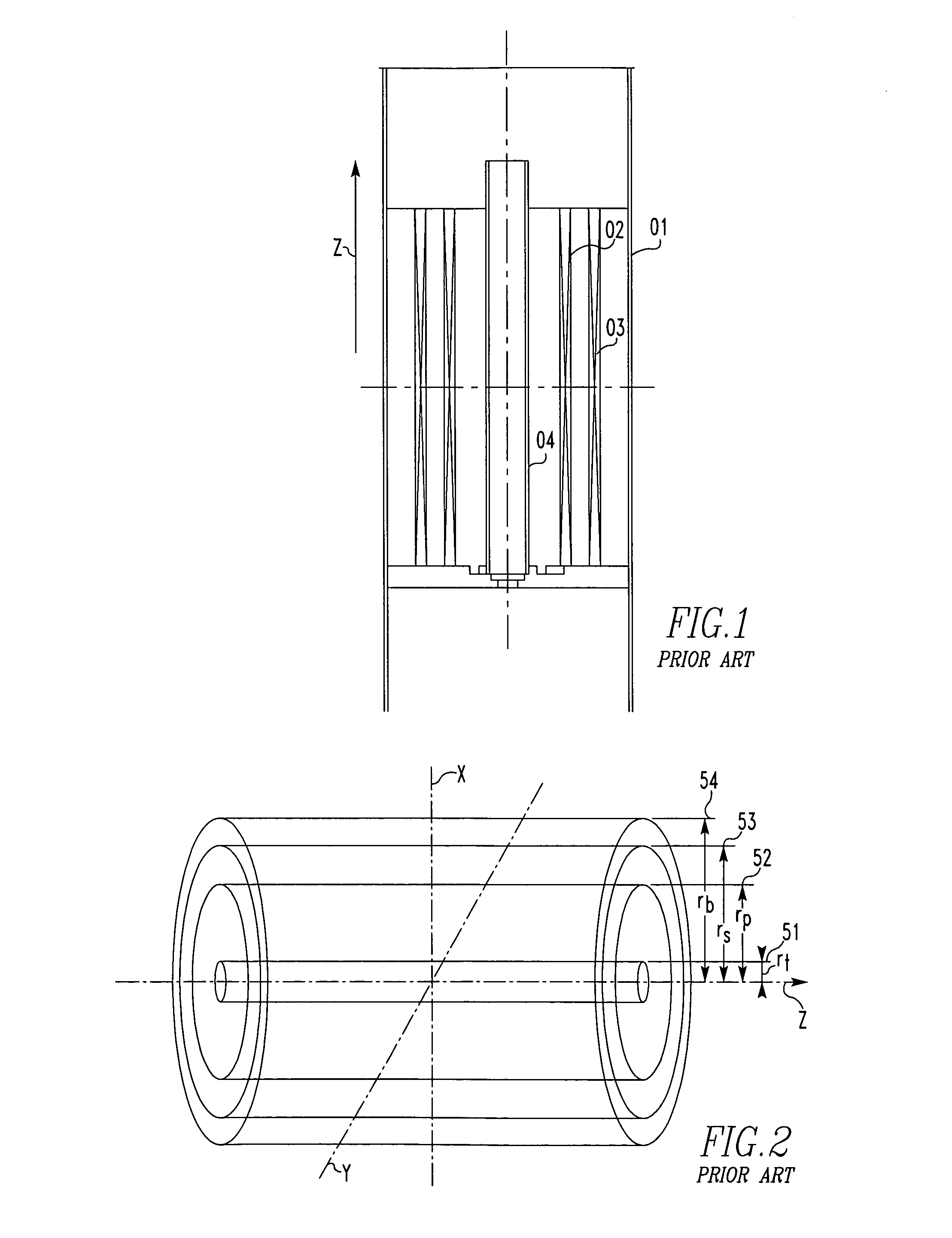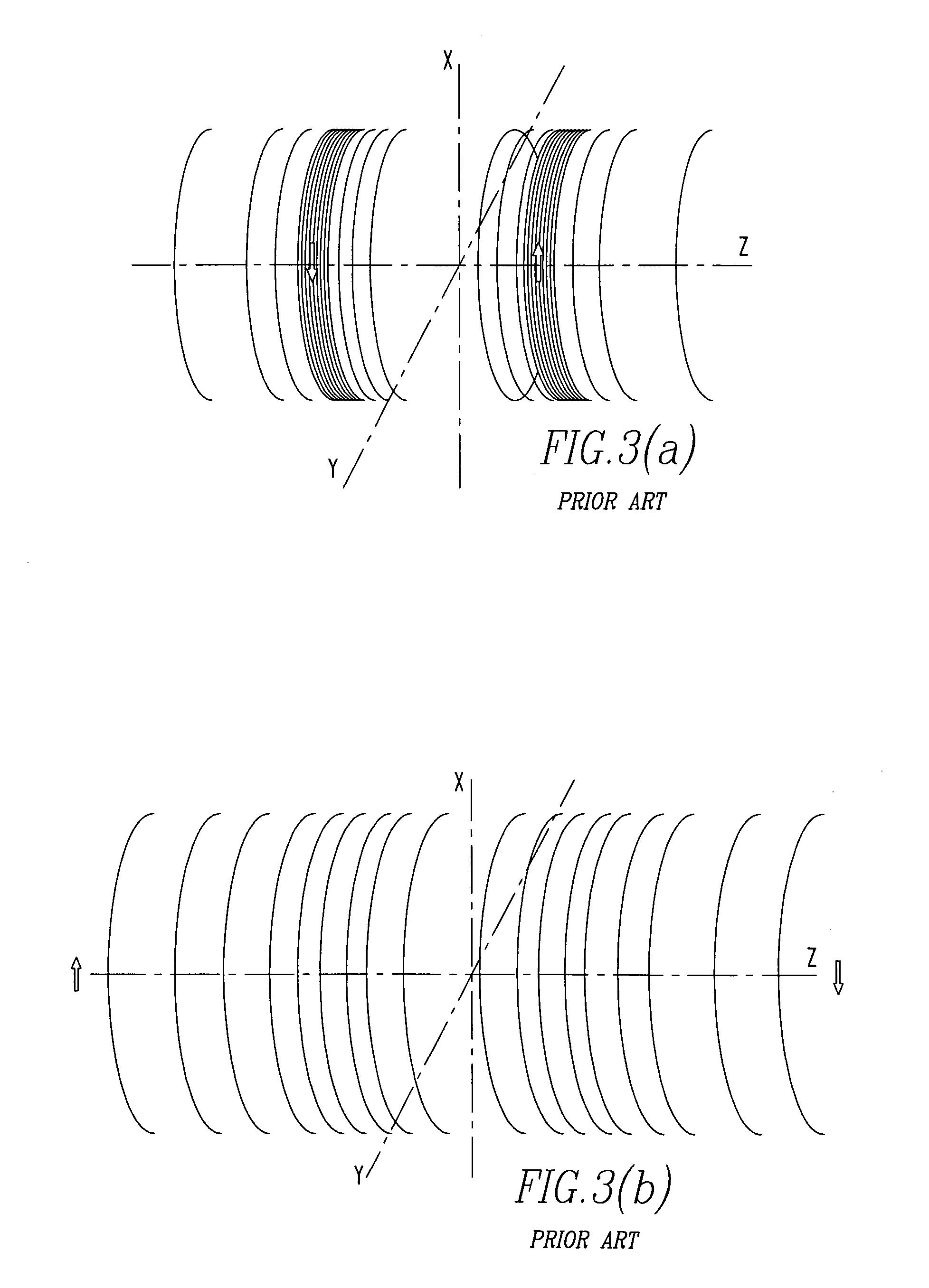Magnetic field gradient coil assembly and method of designing same
a gradient coil and magnetic field technology, applied in the direction of superconducting magnets/coils, instruments, magnetic bodies, etc., can solve the problems of large approximation error, difficult to wind the wire completely in accordance, and more difficult to accurately fabricate the coils. , to achieve the effect of simple structure, large inside diameter and high approximation accuracy
- Summary
- Abstract
- Description
- Claims
- Application Information
AI Technical Summary
Benefits of technology
Problems solved by technology
Method used
Image
Examples
Embodiment Construction
[0043]The preferred embodiments of the invention are hereinafter described. In the following description, the NMR detector of the structure described in connection with FIG. 1 and the system of coordinates and the coil bobbin used for designing and calculations already described in conjunction with FIG. 2 are also used. Accordingly, in the same way as in the prior art structure described previously, the detector of interest has a coil bobbin formed by cylinders 51, 52, 53, and 54, which are also referred to as cylinder 1, cylinder 2, cylinder 3, and cylinder 4, respectively. These cylinders 51, 52, 53, and 54 have radii of rt, rp, rs, and rb, respectively. The radius rt of cylinder 1 is the radius of a target magnetic field taking the form of the cylinder 51. The radius rp is the radius of the primary, inner coil, or the cylinder 52. The radius rs is the radius of the outer screen coil, or the cylinder 53. The radius rb is the radius of the boundary defined by the cylinder 54. An ex...
PUM
| Property | Measurement | Unit |
|---|---|---|
| magnetic field | aaaaa | aaaaa |
| magnetic field strength | aaaaa | aaaaa |
| electric current spatial distribution | aaaaa | aaaaa |
Abstract
Description
Claims
Application Information
 Login to View More
Login to View More - R&D
- Intellectual Property
- Life Sciences
- Materials
- Tech Scout
- Unparalleled Data Quality
- Higher Quality Content
- 60% Fewer Hallucinations
Browse by: Latest US Patents, China's latest patents, Technical Efficacy Thesaurus, Application Domain, Technology Topic, Popular Technical Reports.
© 2025 PatSnap. All rights reserved.Legal|Privacy policy|Modern Slavery Act Transparency Statement|Sitemap|About US| Contact US: help@patsnap.com



